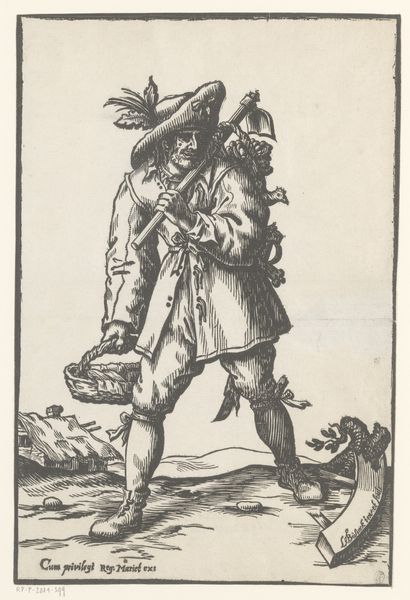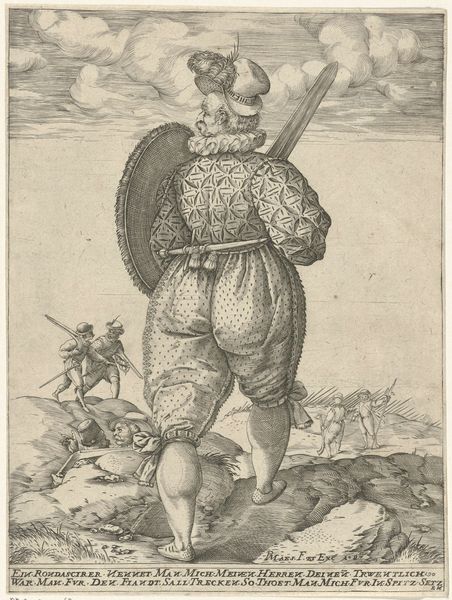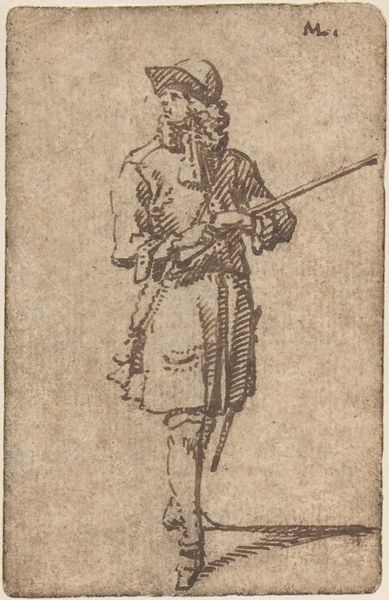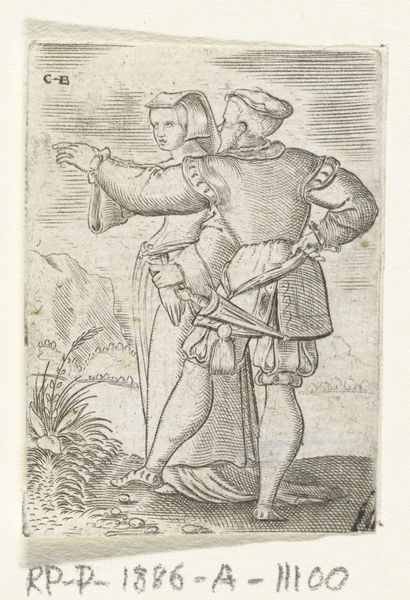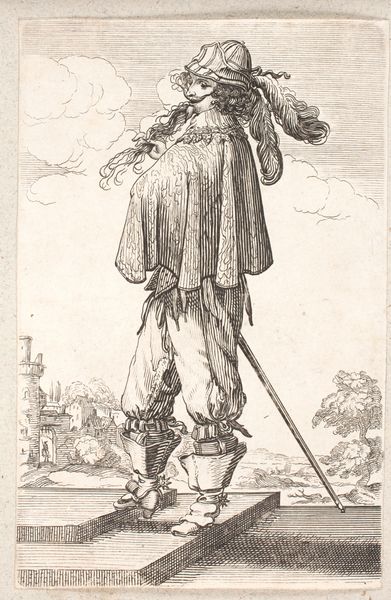
Frontispiece: Allegorical Composition (Composition allegorique) 1767
0:00
0:00
Copyright: National Gallery of Art: CC0 1.0
Editor: So, here we have Gabriel de Saint-Aubin's 1767 engraving, "Frontispiece: Allegorical Composition." There’s a strong figure in the foreground, maybe an indigenous king? It’s a bit hard to tell because the detail is so intricate. He’s trampling on gold and… a balance scale? It feels charged with defiance. What do you make of this piece? Curator: "Charged with defiance," precisely! You feel it, don’t you? It's like stepping into someone's dream – Saint-Aubin, bless his soul, packs a universe into this little print. Allegory was all the rage, wasn’t it? Here, we have a representation of a powerful idea, nobility maybe, spurning material wealth, this ‘gold of the earth’. It makes you wonder, doesn't it, what drove such sentiments back then? Was it genuine disdain or… envy, perhaps? Look at how the figure is posed—dominating the scene. Tell me, what about the landscape in the background? Editor: It almost fades into the background entirely, with only wisps of trees and vague figures. The figure is literally stepping on it! So, perhaps a critique of colonization or wealth accumulation? Curator: Maybe! Saint-Aubin offers us no easy answers, does he? The landscape, the text – it all suggests a rejection of earthly riches. But how committed is the engraver to it himself? I wonder what it says about how even then people may have thought about the cost of progress... and maybe its real value? I guess what I am pondering now is if progress requires the cost of riches. Editor: It definitely gives you something to think about. Thanks for unpacking all those layers. I had not thought about how personal experience affects our interpretation, too. Curator: That is why I come to places such as these. Our dialogues will evolve our collective understaning, one tiny observation at a time.
Comments
No comments
Be the first to comment and join the conversation on the ultimate creative platform.


